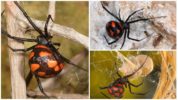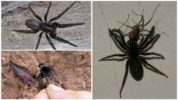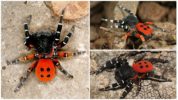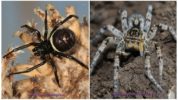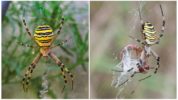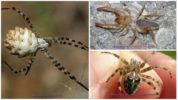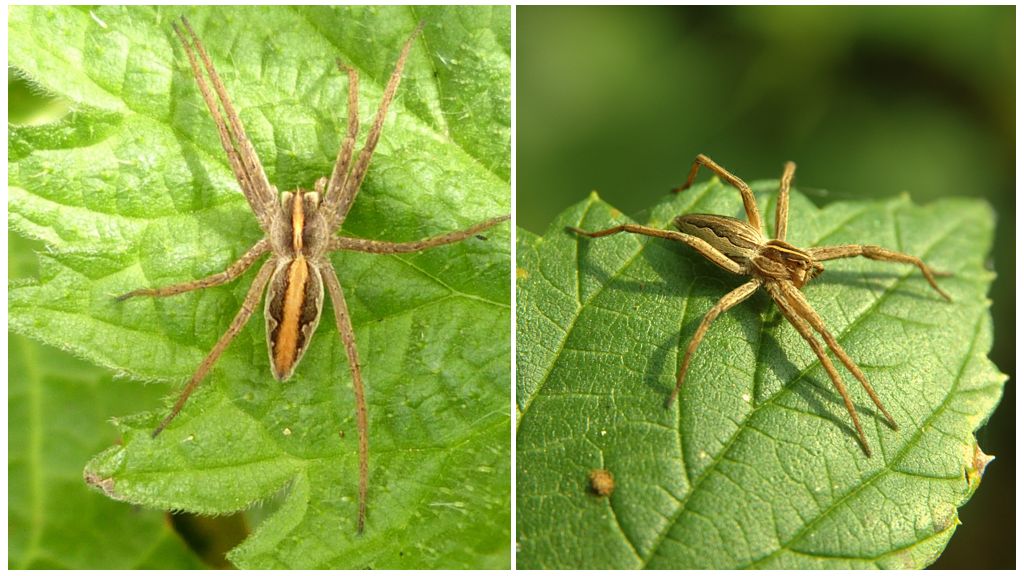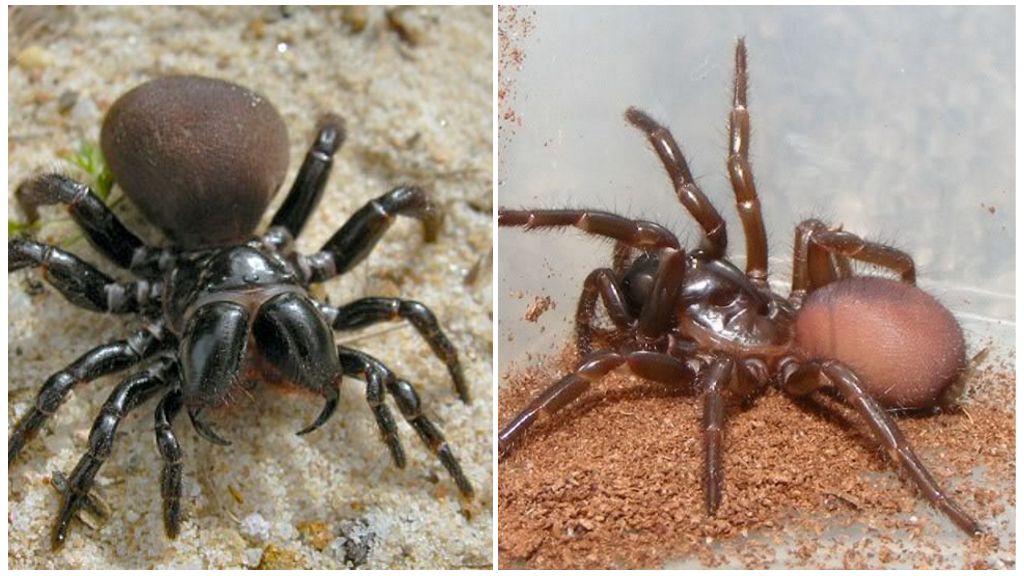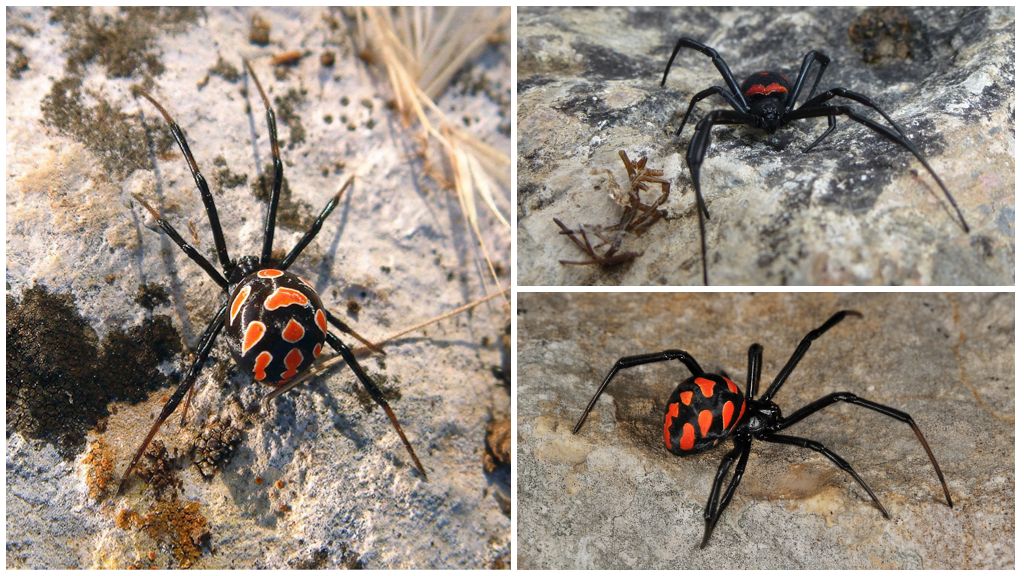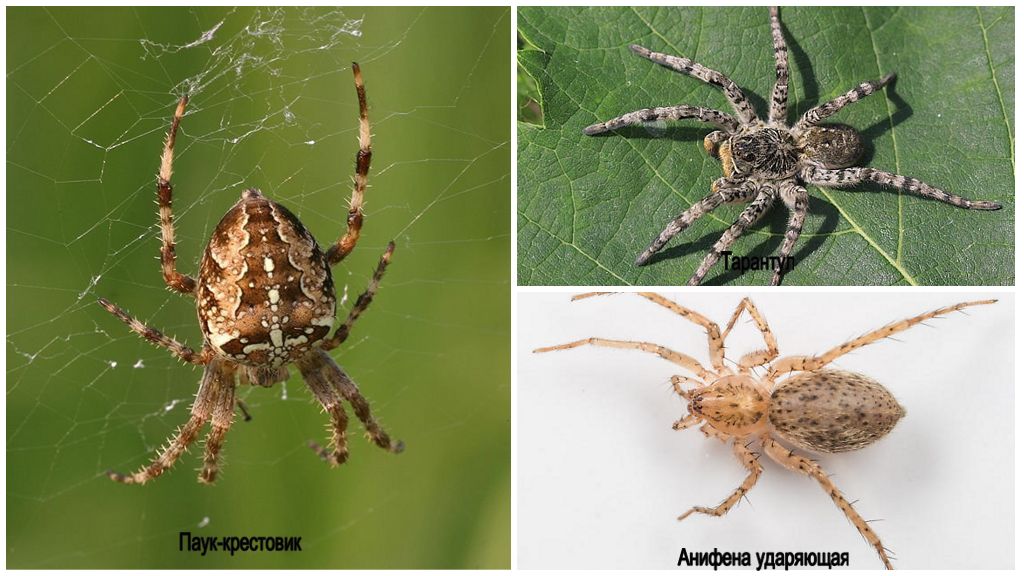- Karakurt
- Cellar spider
- Black erezus
- Crimea spiders
- Argiope Brunnich
- Crimea spiders
People who come to rest in the Crimea are often interested in the question of what dangers can lie in wait there, except for crumbling cliffs and storms at sea. Those who are afraid of arachnids are very worried about what spiders of the Crimea can be really dangerous.
Among the real spiders in Crimea, there are few species with strong poison. Some arthropods are scary in size, but are not dangerous for humans. And this is for the best, since on the peninsula you can find representatives of all species of spidersliving in the southern regions of Europe and a little northern.
Dangerous spiders
Only a few Crimean species with strong poison can be attributed to spiders that can cause serious harm to humans. So that a person dies from spider biteArthropod venom needs to be an allergen for the victim. But some of these animals can deliver a lot of trouble. Sometimes a bite does lead to death if serum is not administered on time.
Dangerous spiders found in Crimea:
- karakurt;
- cellar spider;
- black erezus;
- steicode Paykull;
- South Russian tarantula.
On a note!
Until recently, the last species of spider in the Crimea was not found. It was discovered only in 2018.
Karakurt
A spider of medium size, quite common in the Crimea. Belongs to the genus black widows. The body size of the female is up to 2 cm. The dimensions of the male are on average 6 mm. For humans, it is not dangerous.
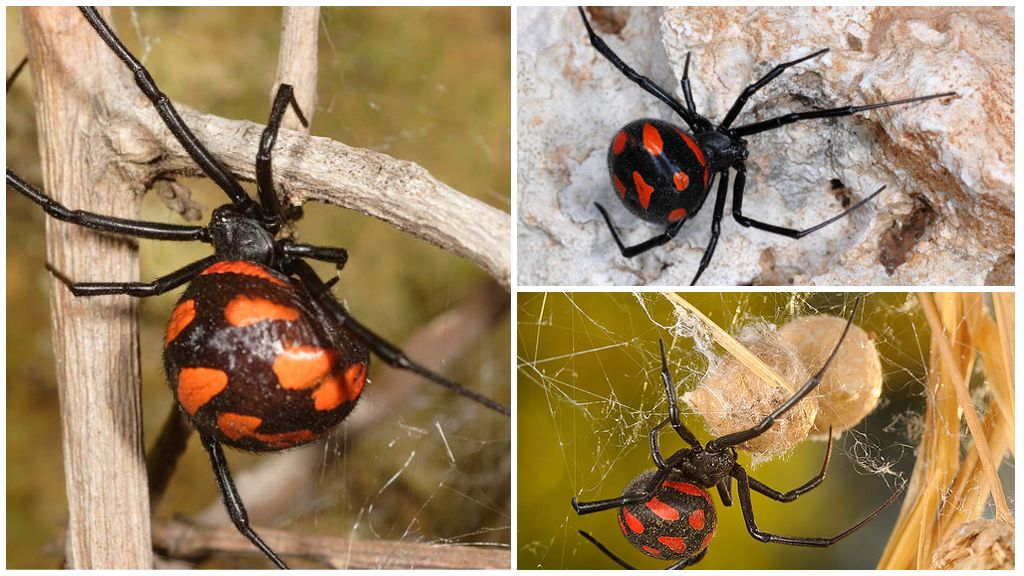
The female abdomen is spherical, shiny. Paws are relatively long. The paw span reaches 4 cm. The arthropod has a pure black color or black with red spots.
The female arranges her home in the voids under the stones, under the roots, in the burrows of animals. Often creeps into the homes of man.
The spider is not aggressive. It attacks if disturbed. The female can attack, protecting cocoons.
Of all the poisonous spiders of Crimea, karakurt is the most dangerous creature. Deaths after his bite are not as frequent as legends tell, but the person experiences pain very serious.
On a note!
Verbal descriptions karakurt and Paikull’s steatodes are very similar to each other. Due to the similarity, these two species of spiders are often confused with each other.
Cellar Spider (Segestria florentina)
This species has a small habitat. A cellar spider is found on the territory of Crimea, the Caucasus, the Black Sea region and the Azov Sea. One of the largest spiders in Crimea and the largest representative of its family. For life, prefers to choose forests. Lives in forest litter, in moss, on trees and under stones.
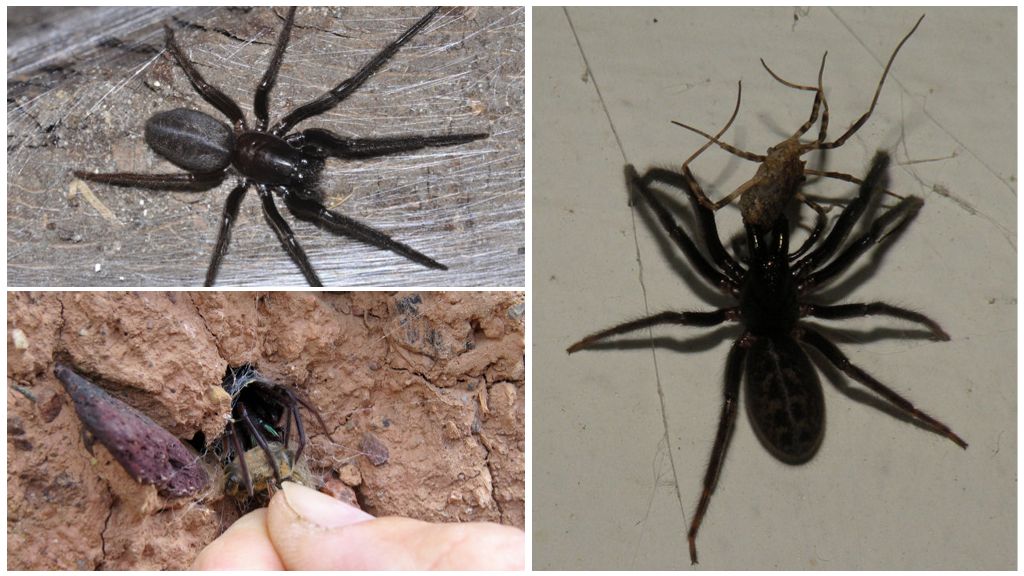
Body length about 2.5 cm. The shape is elongated. The paw span is about 5 cm. The abdomen is ellipsoid in shape and covered with a dense short bristle. The cephalothorax is 8 mm long shiny. Rare bristles on the cephalothorax. Chelicerae are powerful and half the length of the cephalothorax in size.
The color of the abdomen of the cellar spider can be:
- gray-violet with dark spots;
- grayish brown;
- black with a purple tint.
The cephalothorax is black with a purple sheen. Green-bronze chelicerae. Paws are monophonic, without dark rings.
A cellar spider builds funnel-shaped burrows. From the entrance stretches the signal threads.When the victim approaches, he jumps out of the hole, grabs the prey by the chelicera and immediately drags it into the hole. The object of spider hunting is large insects and small vertebrates.
On a note!
A mouse weighing 20 grams dies 3-30 minutes after a bite.
According to the toxicity of the cellar spider is comparable to karakurt. In a bitten animal, its poison causes:
- cramps
- cramping
- increased irritability;
- prostration;
- paralysis.
In humans, due to significantly greater body mass, the consequences will be less fatal. But muscle pain and significant swelling at the site of the bite are guaranteed.
Important!
Karakurt and the cellar are often confused because of the color, because of the whole description in people only “it is black” remains in memory.
Black Eresus (Eresus kollari)
Representative of the Eresus family. The second name is "black fathead". Widespread throughout the Palearctic, but in Russia spiders in some areas are listed in the Red Book. Among the Crimean spiders, it is listed recently, since 2018. This year, black erezus was discovered in the Crimea in the coastal-steppe zone.
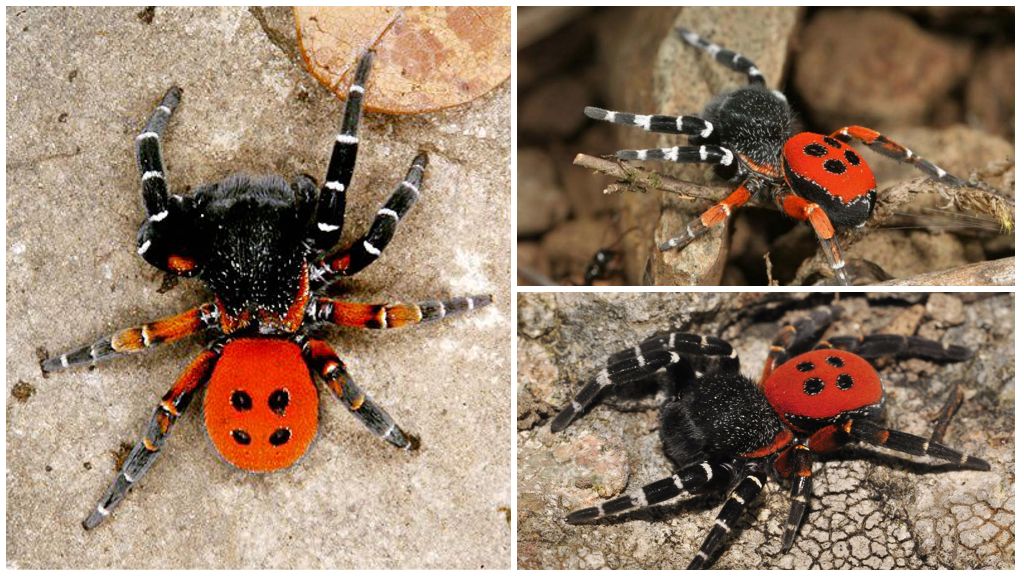
This is a large spider, the body length of which is 3 cm for the female and 1 cm for the male. The name and photo of the black erezus do not coincide slightly. Moreover, neither "official" nor national. In a black fathead, the red color of the upper abdomen is striking in the first place. In the same square there are characteristic 4 black dots. The abdomen is egg-shaped. The sharp end of the “egg” is attached to the cephalothorax.
The cephalothorax is larger than the abdomen. Painted in black. Paws are black and red with white transverse stripes.
The fathead arranges shelter in the voids under the rocks, in the burrows of beetles and other suitable places. Throughout life, he never leaves his refuge. Only young growth at the stage of settlement and males in search of a female emerge from the holes.
It feeds on insects, arthropods and small lizards. Benefits by hunting scolopendra and scorpions.
Interesting!
Females can starve up to 185 days, males up to 150 days.
Due to the size of the prey, eresus venom is capable of causing trouble to a person, although it does not cause death. At the time of the bite, sharp pain is felt. Later, numbness spreads from the wound. Pain with pressure at the site of the bite and stiffness in movement is felt for another 2-6 days.
Steatoda paykulliana
Another name is false karakurt. Another arthropod inhabitant of the Crimea, which is often confused with a black widow. Lifestyle, size, appearance, and these two species are similar. Colors are similar only in color. Steikode Paykull has no red spots. She has a red stripe resembling arrows connected to each other. The streak of arrows runs exactly in the middle of the abdomen. Direction: from the spider glands to the cephalothorax. In front of the abdomen there is also a circular red crescent.
The intensity of the poison of a steatode is similar to that of a hornet.
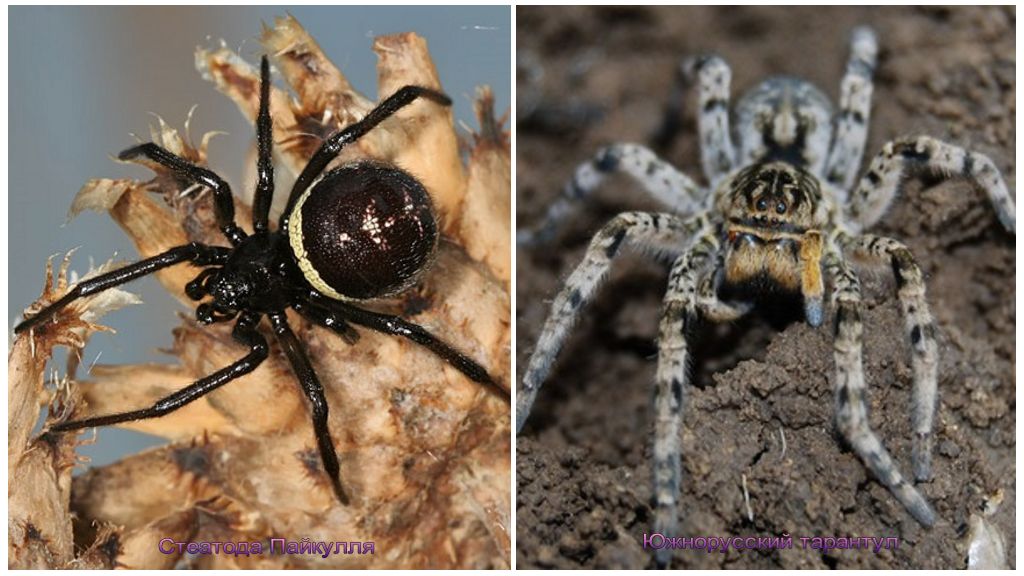
South Russian Tarantula
He is misgir or earth spider. Although the latter can be attributed to other species. Large arthropod gray. Leads a nocturnal lifestyle and can climb into a tent while people are sleeping.
On a note!
The length of the South Russian tarantula is about 3 cm. The body is elongated. Cephalothorax wider than abdomen. Poison is greatly exaggerated, but the hand from the bite may swell.
Weak Spiders
Since non-toxic spiders do not exist in nature, they are not in the Crimea either. There are species that, when large in size, are not dangerous for humans, since their poison is too weak or chelicera cannot bite through the skin. Some spiders, for example haying spider or house spidercompletely unable to hook on human skin. Small spiders sitting in grapes prey on insects in bunches that have decided to eat berries. Since Crimea is one of the regions where grapes are grown on an industrial scale, such vine spiders are expanse there.
These little spiders can only scare arachnophobia.But large spiders with catchy bright colors are able to alert any person who is not familiar with them. Such spiders in the Crimea include:
- Argiope Brunnich;
- arbiope lobata;
- spider cross.
Because of the coloring, the argiop consider dangerous spiders. The cross can only scare the size.
Argiope Bruennichi (Argiope bruennichi)
Also argiope called the wasp spider because of the color of the abdomen. Argiopes belong to orbiting spidersbuilding nets on trees and shrubs.
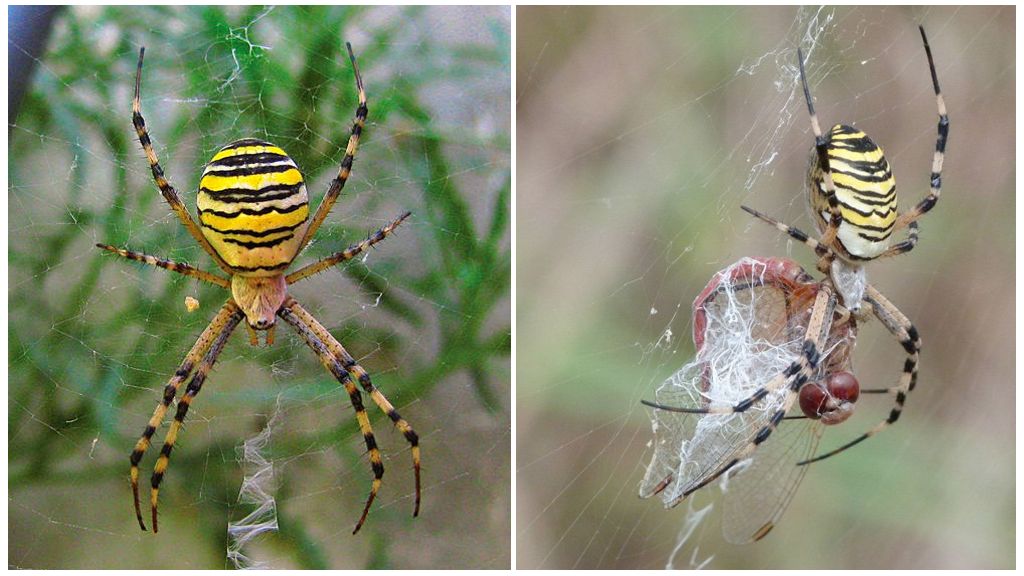
The size of the spiders is small: the female is up to 1.5 cm, the male is up to 5 mm. In both sexes, the abdomen is colored in black and yellow transverse stripes. But the female has a rounded abdomen. The male in body shape is really very similar to a small wasp. These are arthropods, common in Crimea, but the population is not as large as that of the crosses.
An argiope bite is quite painful. But it causes only short-term pain and local irritation at the site of the bite.
Argiope lobata (Argiope lobata)
Another species that is found in the Crimea in small quantities. Looking at the spider gives the impression that he is dressed in a solid chitinous shell. But this is misleading. In fact, argiope lobates have the same soft abdomen as other spiders. It looks like an armored monster because of the silver-white color of the abdomen, “equipped” with 6 deep notches on the sides. The color of the recesses can be from dark to orange.
The female's body size is up to 1.5 cm. Lobata builds nets on trees and shrubs. There is no danger to humans, although the bite is unpleasant.
Common Cross (Araneus diadematus)
The most common large spider in Crimea. On his network you can stumble everywhere: from tall grass in the steppe to a tree on the Crimean Yale. Cross loves to settle in vineyards and orchards. There is more prey.
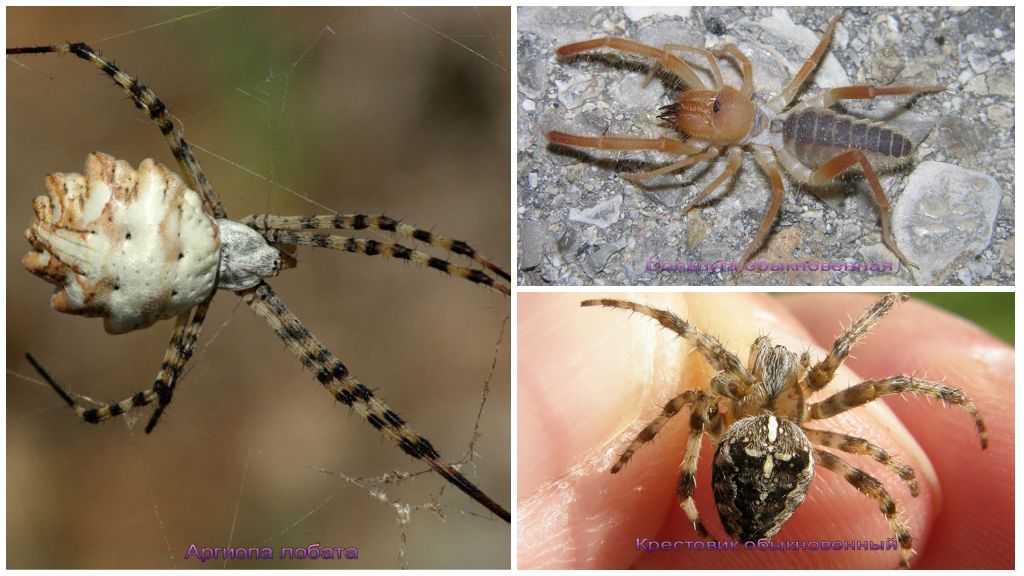
The body size of the female is 2-2.5 cm, the male is 1 cm. The female has a large, convex egg-shaped abdomen with an exaggerated sharp tip. The "blunt" end of the "egg" is connected to the cephalothorax. The male abdomen is flattened, elongated and narrow. The cephalothorax is round and wider than the abdomen.
The color of the crosses can be in yellow-white or gray-white colors. On the back there is a characteristic pattern in the form of a cross, for which the spiders got the name.
On a note!
The bite of the cross is weaker than the mosquito and is not able to do harm. The spider cannot even bite through the skin of a 6-year-old child, but it is able to explain to the mischievous person that it is not necessary to hunt for funny “crusaders”. Crosses are dangerous only for people with a tendency to allergies and suffering arachnophobia.
Who is the ordinary salpuga
First of all, it is a Red Book animal. Therefore, as if terribly salpuga neither looked, you do not need to kill her. Although this arthropod could star in horror films without makeup.
On a note!
The Crimean saltpug has two more names: the South Russian saltpug and the ordinary galeod (Galeodes araneoides). This is not a spider. She has neither poisonous nor spider glands. Solpuga belongs to the phalanx squad.
Outwardly, she really looks like huge spider up to 6 cm in size. The color is yellow-brown, the color of dry grass and fallen leaves. It is difficult to detect a salpug on Crimean land.
The food of the saltpug is truly dangerous inhabitants of the Crimea: scolopendra and scorpions. In addition to them, the animal preys on spiders, termites, wood lice. Do not disdain small lizards.
She does not suck out food, but grinds it with mandibles. For this reason, a bite of a salpuga can be dangerous: particles of rotting flesh remain on the stings, which makes a person infected with sepsis.
